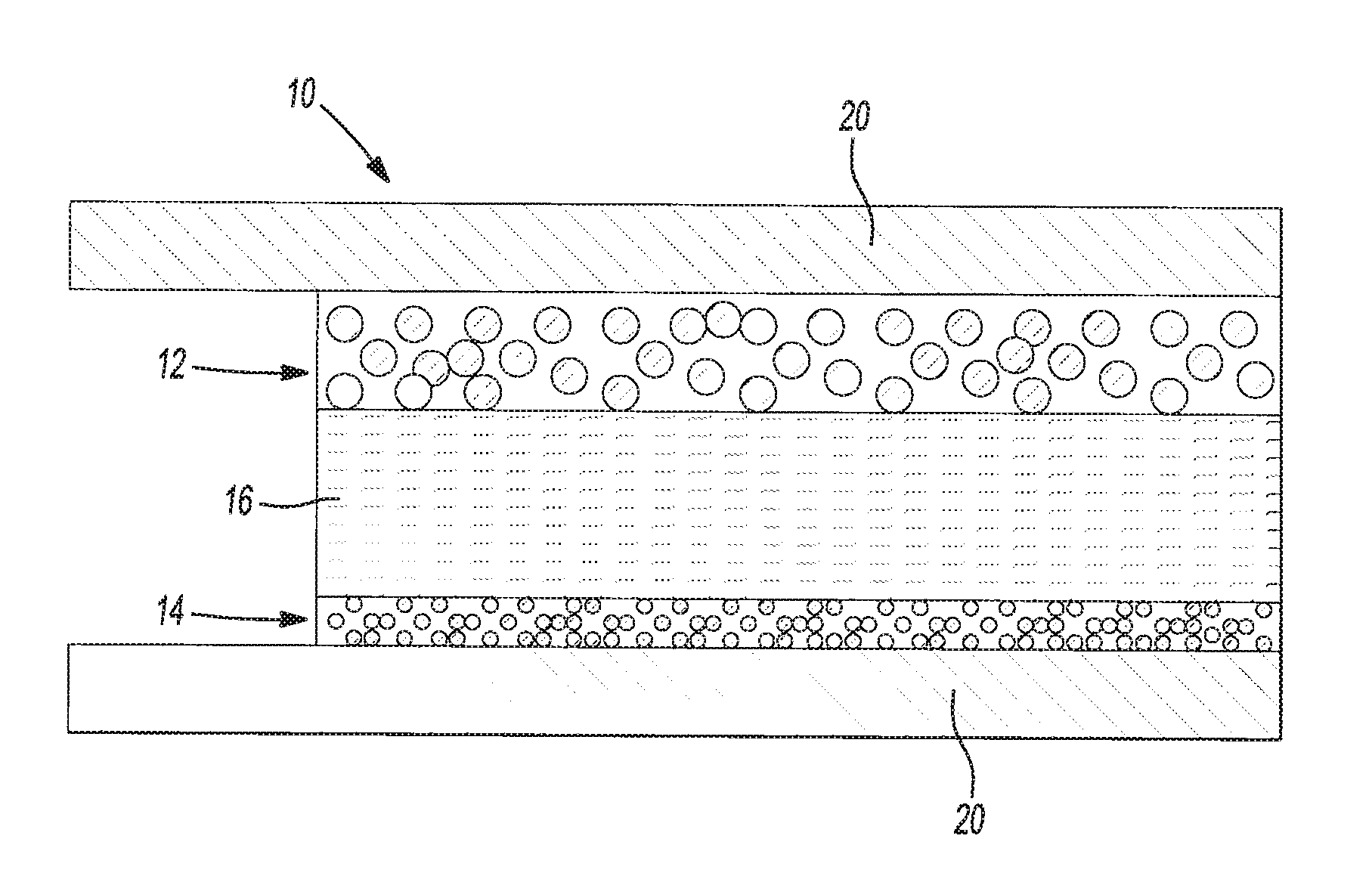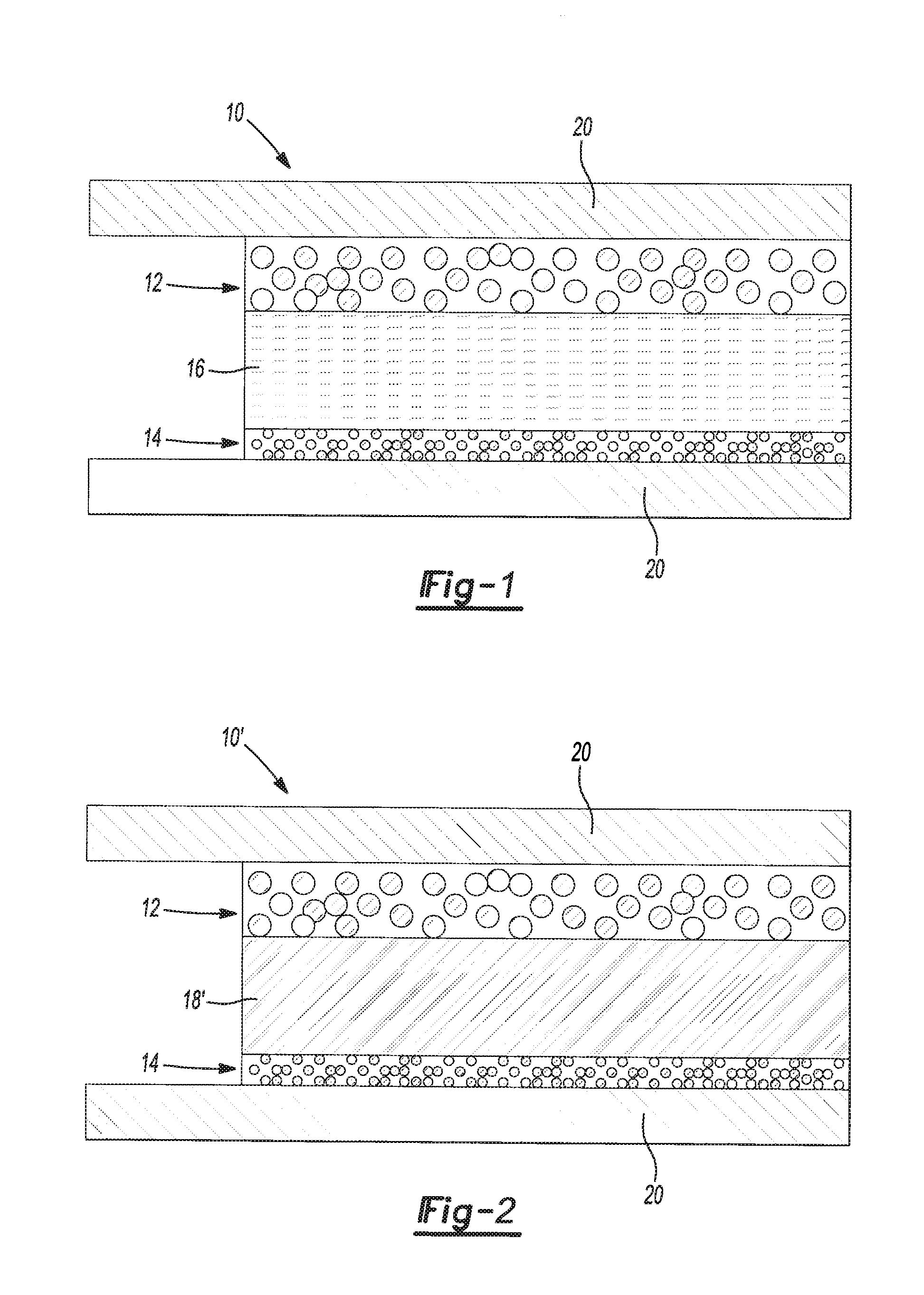Polymer electrolytes including porous organic particles
- Summary
- Abstract
- Description
- Claims
- Application Information
AI Technical Summary
Benefits of technology
Problems solved by technology
Method used
Image
Examples
example 1
[0099]43.6 weight percent PS-L-1, 43.6 weight percent PEO-1, and 12.8 weight percent lithium triflate are combined in a beaker with enough deionized water to dissolve the PEO. The mixture is mixed overnight at a temperature of about 25° C. The mixing temperature is kept below the glass transition temperature of the polymer in the PS-L-1 latex. Mixing is continued until the PEO-1 is dissolved and the solution is homogeneous. The solution is then dried at room temperature using a continuous flow of nitrogen gas to remove the water. The drying is completed under vacuum at room temperature to remove the remaining water. After drying, the composition contains a molar ratio of ethylene oxide groups (EO) on the polyethylene oxide to lithium (i.e., on the lithium triflate) of about 12:1.
examples 2-6
[0100]Examples 2, 3, 4, 5, and 6 are prepared using a similar procedure as in Example 1 using the concentration given in TABLE 2. The concentration of the lithium triflate is chosen so that the molar ratio of oxygen (i.e., ethylene oxide) to lithium (i.e., lithium triflate) is about 12:1. Example 2, and Example 3 are prepared with a weight ratio of PS-L-1:PEO-1 of about 2:1 and about 3:1, respectively. Examples 4, 5 and 6 are prepared using PS-L-2 instead of PS-L-1. Example 4, Example 5, and Example 6 are prepared with a weight ratio of PS-L-2:PEO-1 of about 1:1. about 2:1 and about 3:1, respectively.
[0101]Comparative Example 7 is prepared by mixing PEO-1 and lithium triflate at a temperature above the melting temperature of the PEO-1 as shown in TABLE 2.
[0102]Examples including propylene carbonate solvent are prepared by dissolving the PEO in deionized water to form a PEO solution and mixing the PEO solution with the latex (which contains about 50 percent polymer and about 50 perce...
PUM
| Property | Measurement | Unit |
|---|---|---|
| Temperature | aaaaa | aaaaa |
| Fraction | aaaaa | aaaaa |
| Fraction | aaaaa | aaaaa |
Abstract
Description
Claims
Application Information
 Login to View More
Login to View More - Generate Ideas
- Intellectual Property
- Life Sciences
- Materials
- Tech Scout
- Unparalleled Data Quality
- Higher Quality Content
- 60% Fewer Hallucinations
Browse by: Latest US Patents, China's latest patents, Technical Efficacy Thesaurus, Application Domain, Technology Topic, Popular Technical Reports.
© 2025 PatSnap. All rights reserved.Legal|Privacy policy|Modern Slavery Act Transparency Statement|Sitemap|About US| Contact US: help@patsnap.com


